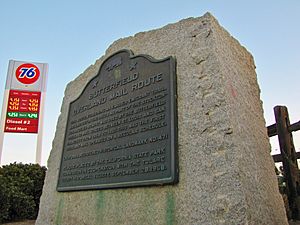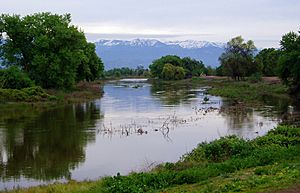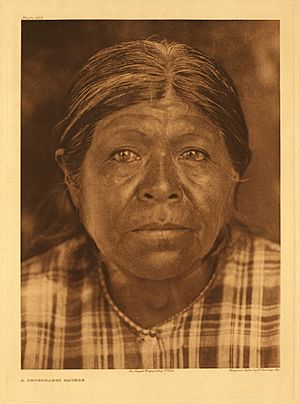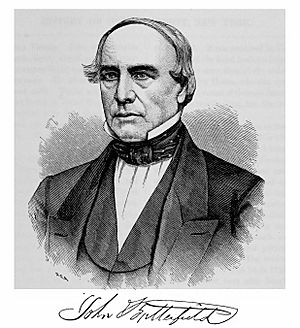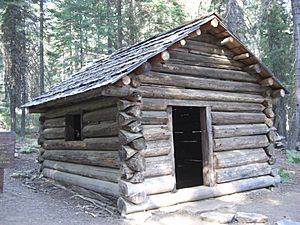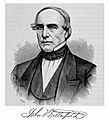California Historical Landmarks in Tulare County facts for kids
This article explores some of the important historical places in Tulare County, California. These places are called California Historical Landmarks. They are special spots that help us remember important events and people from the past. You can learn a lot about how California grew and changed by visiting these landmarks.
Template:TOC limit=3
Contents
Exploring Tulare County's Historic Places
Tulare County is full of history, from early settlements to important transportation routes. These landmarks help us understand the stories of the people who lived here long ago.
Allensworth Historic Town Site
The Allensworth Historic Town Site (Landmark 1047) is a very special place near Earlimart. It was the first and only town in California founded, financed, and governed by African Americans. Colonel Allen Allensworth, a former slave and a respected military chaplain, started this town in 1908. He wanted to create a community where African Americans could live freely and succeed. Today, you can visit Colonel Allensworth State Historic Park to see the restored buildings and learn about the town's inspiring story.
Butterfield Stage Route
The Butterfield Stage Route (Landmark 471) marks a part of an old stagecoach trail near Lindsay. This route was part of the famous Butterfield Overland Mail service. It was a very important way to travel and send mail across the country in the 1850s. Stagecoaches carried passengers and letters from the eastern United States all the way to California. Imagine how long and bumpy those rides must have been!
Election Tree
The Election Tree (Landmark 410) was a famous landmark in Visalia. This large oak tree was where early settlers in Tulare County held their first elections. Before official buildings were common, natural landmarks like this tree served as gathering places for important community events. It reminds us of the simple beginnings of local government.
First Tule River Reservation
The First Tule River Reservation (Landmark 388) is located near Porterville. This site marks the original land set aside for the Tule River Indian Tribe of the Tule River Reservation. It is an important place for understanding the history and culture of the Native American people in this region. The Tule River Tribe has a rich heritage and a long connection to the land.
Fountain Springs
Fountain Springs (Landmark 648) is a historic spot that was once a stop on the Butterfield Stage Route. Located in the area of Fountain Springs, this was a vital place for travelers to rest and get fresh water. Imagine how important a reliable water source was in the dry California landscape for weary travelers and their horses.
Kaweah Post Office, Kaweah Colony
The Kaweah Post Office (Landmark 389) was part of the Kaweah Colony near Kaweah. This was a unique community founded in the late 1800s by people who wanted to live and work together in a cooperative way. They aimed to create a society based on shared labor and resources. The colony was located near the giant sequoia trees, and its members played a role in the early efforts to protect these natural wonders.
Tailholt
Tailholt (Landmark 413) is a historic mining town site near White River. In the past, this area was a busy place for gold mining. Many people came to California hoping to find their fortune during the gold rush era. Tailholt was one of the many small towns that sprang up to support these miners.
Tulare Assembly Center
The Tulare Assembly Center (Landmark 934-9) was located at the Tulare County Fairgrounds in Tulare. This site played a part in a difficult period of American history during World War II. It was one of the temporary centers where Japanese Americans were held after the attack on Pearl Harbor. This landmark serves as a reminder of the importance of protecting everyone's rights.
Tule River Stage Station
The Tule River Stage Station (Landmark 473) was another important stop on the Butterfield Stage Route, located in Porterville. Like Fountain Springs, this station provided a place for stagecoaches to change horses and for passengers to rest. These stations were essential for the long journeys across the country, making travel possible in the days before cars and airplanes.
Images for kids


